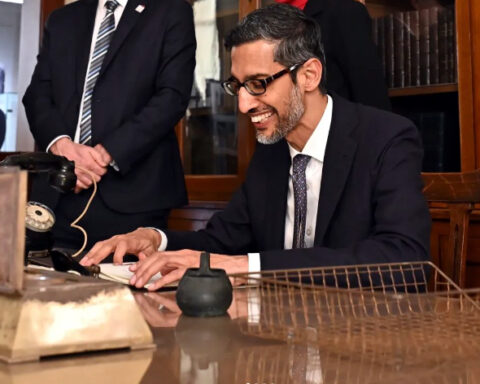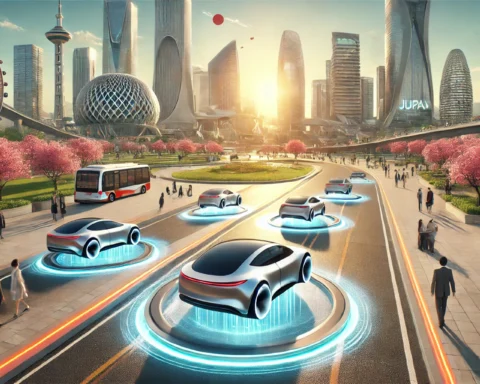New Delhi/ TNF
On Thursday, Prime Minister Narendra Modi virtually launched three state-of-the-art supercomputers, named “Param Rudra”, as well as a high-performance computing (HPC) system for weather and climate research. These launches mark a significant step in India’s technological advancement under the National Supercomputing Mission (NSM), with a vision to strengthen the country’s research capabilities and propel it towards self-reliance in science and technology.
The National Supercomputing Mission, initiated in 2015, is a collaborative effort between the Ministry of Electronics and Information Technology and the Department of Science and Technology. The primary aim of this mission is to build a robust computing infrastructure, which can support complex scientific and industrial research, boost education, and foster innovation across sectors such as MSMEs, startups, and healthcare.
Prime Minister’s Vision for Science and Technology
During the virtual event, PM Modi underscored the importance of a grand vision to achieve major breakthroughs. He emphasized that technological upgrades should primarily focus on empowering the less privileged and enhancing their quality of life. He said, “A nation can aim for big accomplishments only when its vision is large. Our approach is to ensure that technology benefits the common people and contributes to their welfare.”
He further highlighted how the government is giving top priority to science, technology, and research, adding that major missions, such as Gaganyaan, are progressing steadily. “Preparations for the Gaganyaan mission have begun, and we are on track to set up our own space station by 2035,” Modi said. He noted that advancements in supercomputing would have a far-reaching impact on various fields, including weather prediction, medical research, and industrial design.
Key Details About Param Rudra Supercomputers
The Param Rudra supercomputers are designed to boost India’s scientific research capacity in crucial areas, including space research, atomic physics, material science, and climate studies. The initiative is part of the larger National Supercomputing Mission launched in 2015, and this step represents a significant milestone in the country’s journey towards building an indigenous supercomputing ecosystem.
Here are some notable aspects of these supercomputers:
- Deployment Across Major Research Centers: The Param Rudra supercomputers have been installed at three premier institutions to cater to different areas of research:
Delhi: The Inter-University Accelerator Centre (IUAC) will use it for research in material science and atomic physics, key areas in modern science that require high computational power for simulations and experiments.- Pune: The Giant Metrewave Radio Telescope (GMRT) will use the system for studying fast radio bursts (FRBs) and other cosmic phenomena. The study of FRBs has gained considerable attention in the global scientific community, and this initiative aims to put India at the forefront of astronomical research.
- Kolkata: The S N Bose National Centre for Basic Sciences will focus on advanced research in physics, cosmology, and earth sciences. This installation will aid scientists in decoding complex problems related to the universe and physical laws.
- Investment and Cost: These supercomputers have been developed at a cost of ₹130 crore. The investment signifies India’s commitment to strengthening its computational infrastructure and pushing forward in the global race for technological leadership.
- Support for Indian Research: The supercomputers will provide critical computational resources to universities, research institutions, and startups across India. The goal is to foster innovation, enhance scientific research, and allow Indian scientists to work on complex, data-intensive projects.
High-Performance Computing for Weather and Climate
Along with the Param Rudra supercomputers, PM Modi also launched an ₹850 crore High-Performance Computing (HPC) system for weather and climate research. This system will enhance India’s ability to forecast and study natural phenomena like monsoons, cyclones, and climate change. Accurate weather predictions can significantly improve disaster management and planning, providing vital support for sectors like agriculture, water management, and energy.
PM Modi’s Key Remarks
During his speech, PM Modi laid out several crucial points regarding India’s focus on science and technology:
- Empowering Research Through Technology: Modi highlighted how advancements in computing technology are reshaping industries globally. “There is no sector that doesn’t rely on technology and computing power today,” he stated, adding that India must not be left behind in this revolution. He emphasized that India’s contribution to this new era must not be in bits and bytes but in terabytes and petabytes, signaling the need for scaling up efforts across sectors.
- Quantum Computing: Modi pointed out that alongside supercomputing, the government is also prioritizing quantum computing technology, which has the potential to revolutionize fields such as manufacturing, artificial intelligence, and cybersecurity. He noted that progress in quantum technology will benefit sectors like IT, MSMEs, and startups, making India a global hub for innovation.
- Technology for Common People: Stressing the government’s focus on inclusive development, the PM reiterated the mission to ensure that technological advancements benefit the common man. “Our mission is to use science and technology for self-reliance. The steps we have taken today will ensure that the benefits of technology reach the poorest in society,” Modi said.
Supercomputing Mission Progress
The Param Rudra systems are the latest in a series of supercomputers deployed under the National Supercomputing Mission. The mission began with the installation of Param Shivay, India’s first indigenous supercomputer, at IIT-BHU in 2019. Since then, India has rapidly expanded its supercomputing infrastructure, with an aim to achieve self-reliance in this critical technology.
Modi also mentioned that these advancements are just the beginning. The mission aims to continue building more powerful systems to support industries, research institutions, and universities, eventually making India one of the leading nations in computational technology.
Conclusion
The launch of the Param Rudra supercomputers marks a pivotal moment in India’s technological journey. With a vision to achieve self-reliance and foster scientific innovation, the government is focusing on strengthening its research infrastructure. The newly launched systems, along with the HPC system for climate research, will provide Indian scientists, researchers, and startups the tools they need to make significant breakthroughs and put India at the forefront of the global technology landscape.











